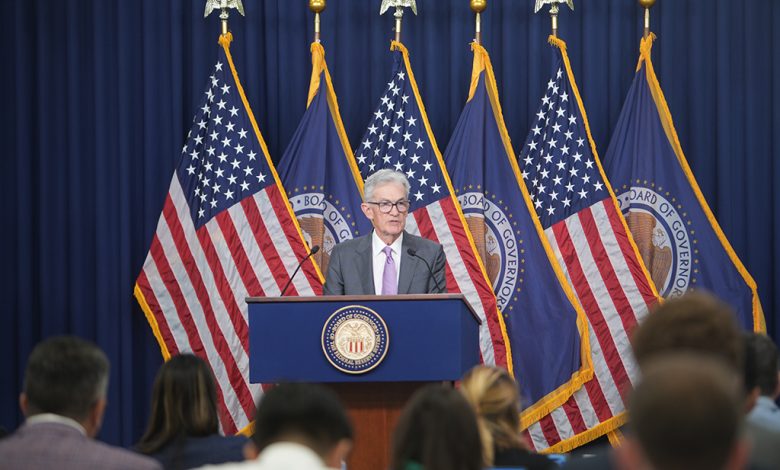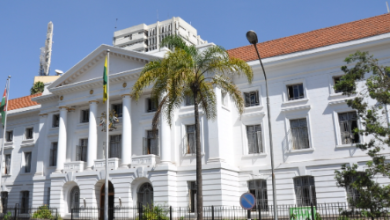Why US Fed’s 0.5% Interest Rate Cut Matters to Markets like Kenya

The US Federal Reserve has cut rates by 0.50% – the first cut in four years – to the range of 4.75% to 5.00%, marking the beginning of an era of easing.
The move surprised the markets which were torn between half-point rate cut and quarter-point rate cut for about two weeks.The Fed had held its policy rate in the 5.25%-5.50% range since July of 2023 as inflation fell from a 40-year high to a level that is now edging closer to the Fed’s target.Foreign direct investment is likely to be boosted in emerging economies as an effect of lower rate cuts which make US securities less attractive.“The labor market is in solid condition, and our intention with our policy move today is to keep it there,” Fed Chair Jerome Powell said.
“You can say that about the whole economy: The US economy is in good shape. It’s growing at a solid pace, inflation is coming down. The labor market is at a strong pace. We want to keep it there. That’s what we’re doing,” he added.
The dovish stance is a relief to borrowers pointing to the reduced costs of borrowing including mortgages, auto loans, credit card and saving rates. Recently, mortgage rates had already dropped slightly in anticipation of a rate cut. Additionally, this cut is expected to make borrowing more affordable, stimulating spending and investment.
The Fed’s move comes after peer central banks in developed economies including the Eurozone already cut rates – U.K, Switzerland, Mexico, Canada and sweden.
When the US sneezes, the World catches a coldThe Ripple effects of the Fed rate cuts will be felt globally with emerging markets like Kenya remaining sensitive.
Kiprono Kittony, Chairman of the Nairobi Securities Exchange, noted that the recent US Federal Reserve rate cut is expected to drive dollar inflows into frontier markets like Kenya. He made these remarks during an event launching bond market reforms at the Nairobi Stock Exchange.
Lower interest rates tend to push away investors who are seeking better returns, opting for high interest investments. This shift is likely to result in increased foreign inflows to Kenya, boosting demand for the country’s bonds and equities market, in turn driving up prices. Historically, since 1989, Emerging Markets stocks have outperformed developed markets during easing cycles.
Foreign inflows result in over supply of foreign currency – the US Dollar – heightening the demand for the Kenyan Shilling, which results in a potential appreciation of the domestic currency. Further, lower borrowing rates in the US results in a weaker dollar, softening the ground for other currencies. On Thursday, the US Dollar weakened below the 101 mark trading at 100.68.
“Yet Emerging Markets bonds have yielded superior returns, on average, across all economic scenarios during Fed easing cycles and thus potentially offering a more appealing entry point while US growth uncertainty persists. We believe a more favorable opportunity may arise once there is clearer evidence of reduced election risks, coupled with a soft landing and a weaker US Dollar,” the Julius Baer Group, a Swiss Wealth Management firm, noted.
The Central Bank of Kenya (CBK) is likely to follow in Fed’s footsteps albeit cautiously while weighing the economic conditions in the country. During the August Monetary Policy Committee meeting, the CBK took a bold step in delivering a 0.25 percent rate cut owing to easing inflation towards the low bound target and the appreciating currency.
Since 2022, the US has delivered tax hikes from lows of 0.25% to highs of 5.75% in a bid to stabilize the then escalating inflation, pushing the dollar higher against a basket of currencies. Comparatively, the Japanese Yen saw a decline during the period, with the Bank of Japan keeping rates lower.
For the US stock market, it is a boost to prices since listed companies’ debt burden is reduced and riskier investments are encouraged. Rate cuts further erode the saving culture with investors preferring stocks as an attractive investment vehicle. However, the looming US elections pose risks and elevated volatility in the equities market.
Gold has since hit record highs above US$2500 per ounce when the markets sentiments were drawn towards possible rate cuts since the beginning of the year. Higher interest rates attract investors to assets such as government securities while lower interest rates bolsters Gold’s performance. Evidently, as an immediate effect of the rate cut, Gold gained to a record US$2599 on Wednesday.



